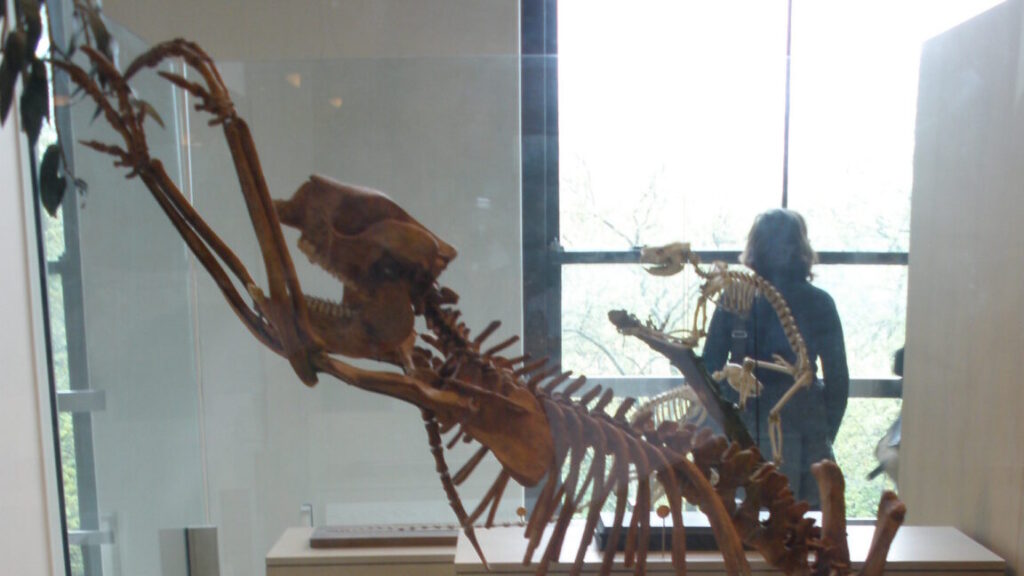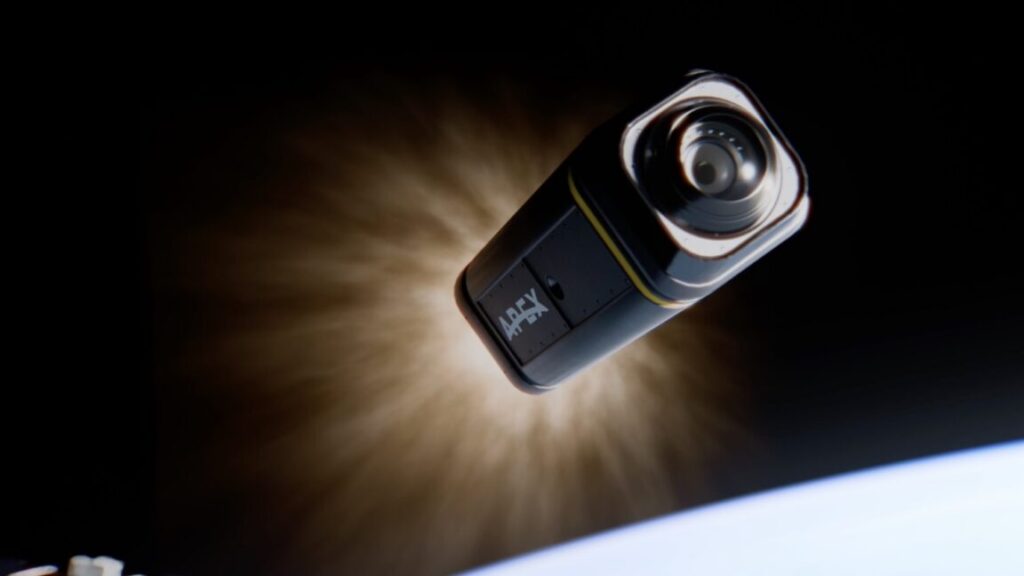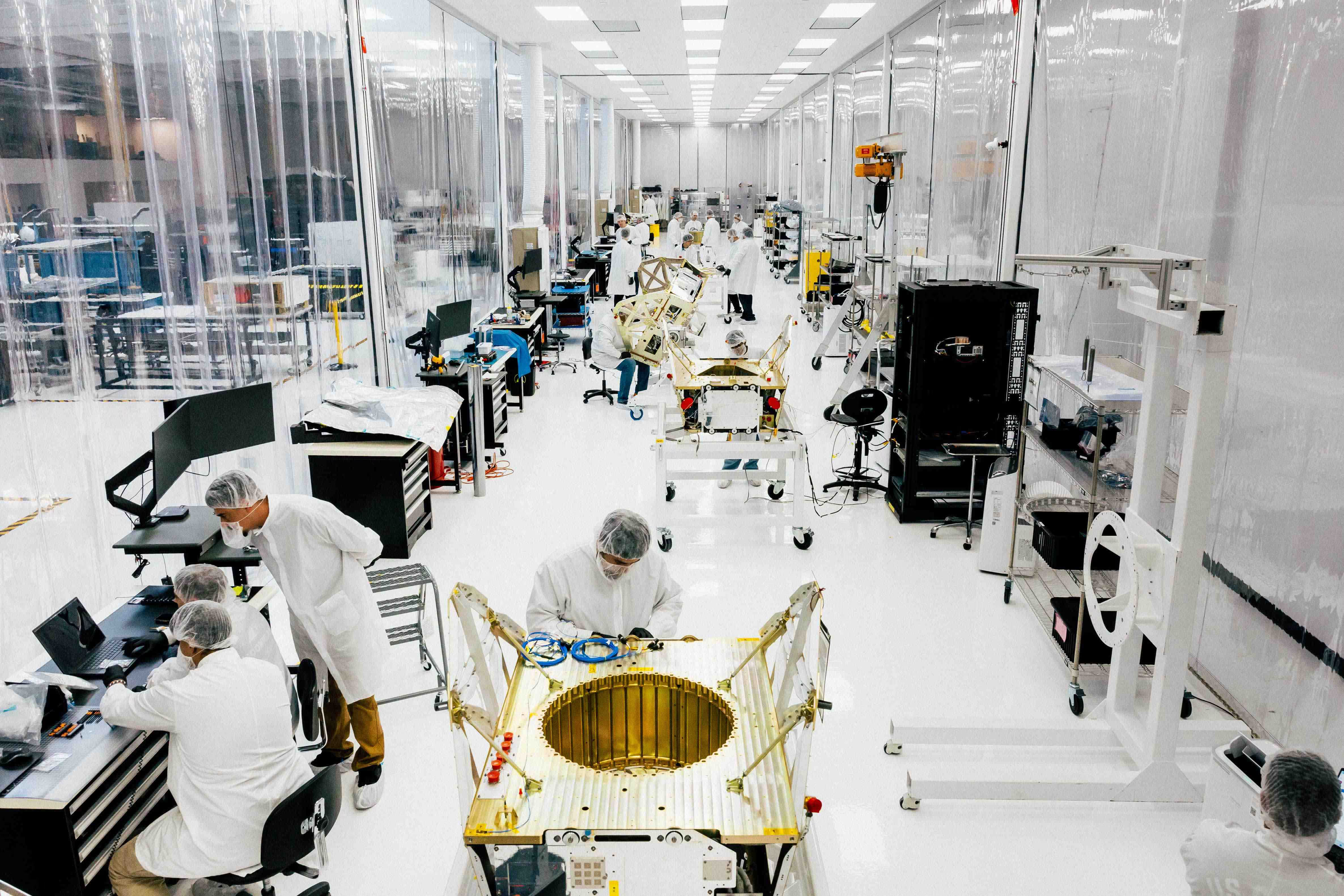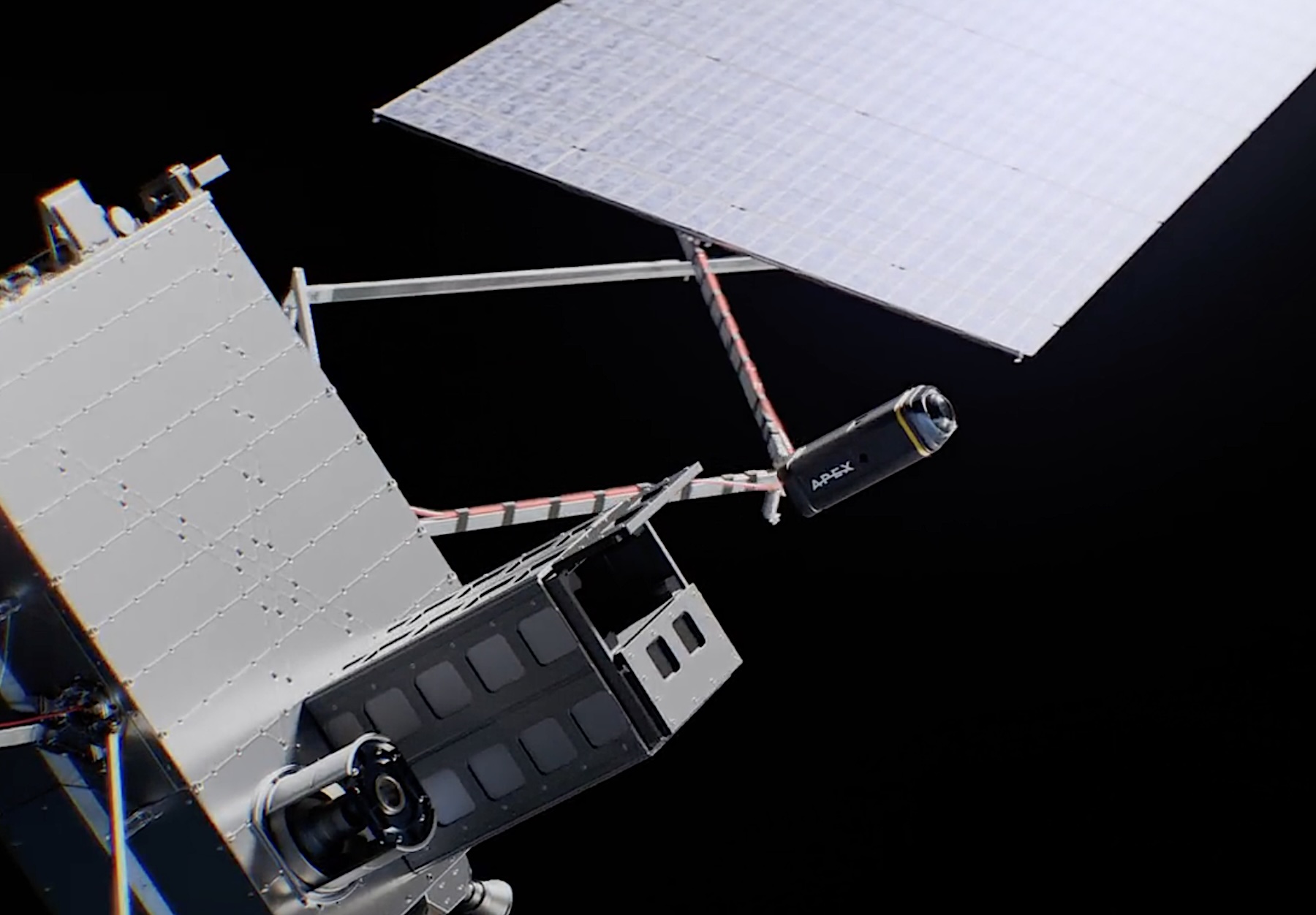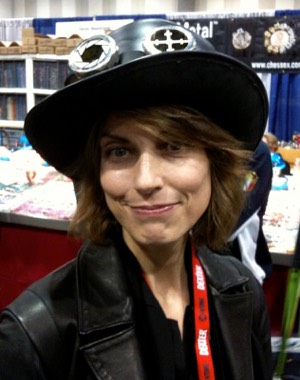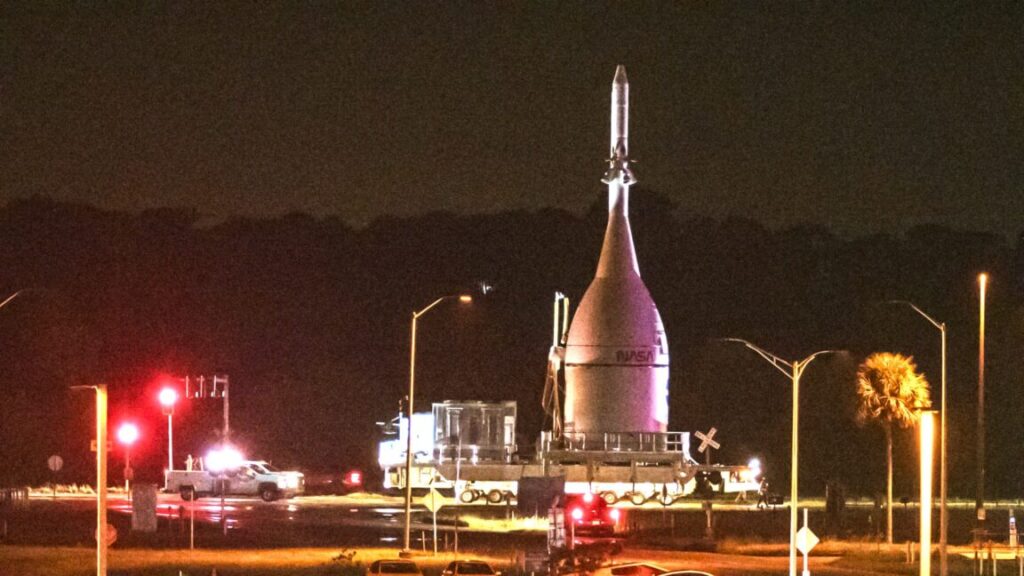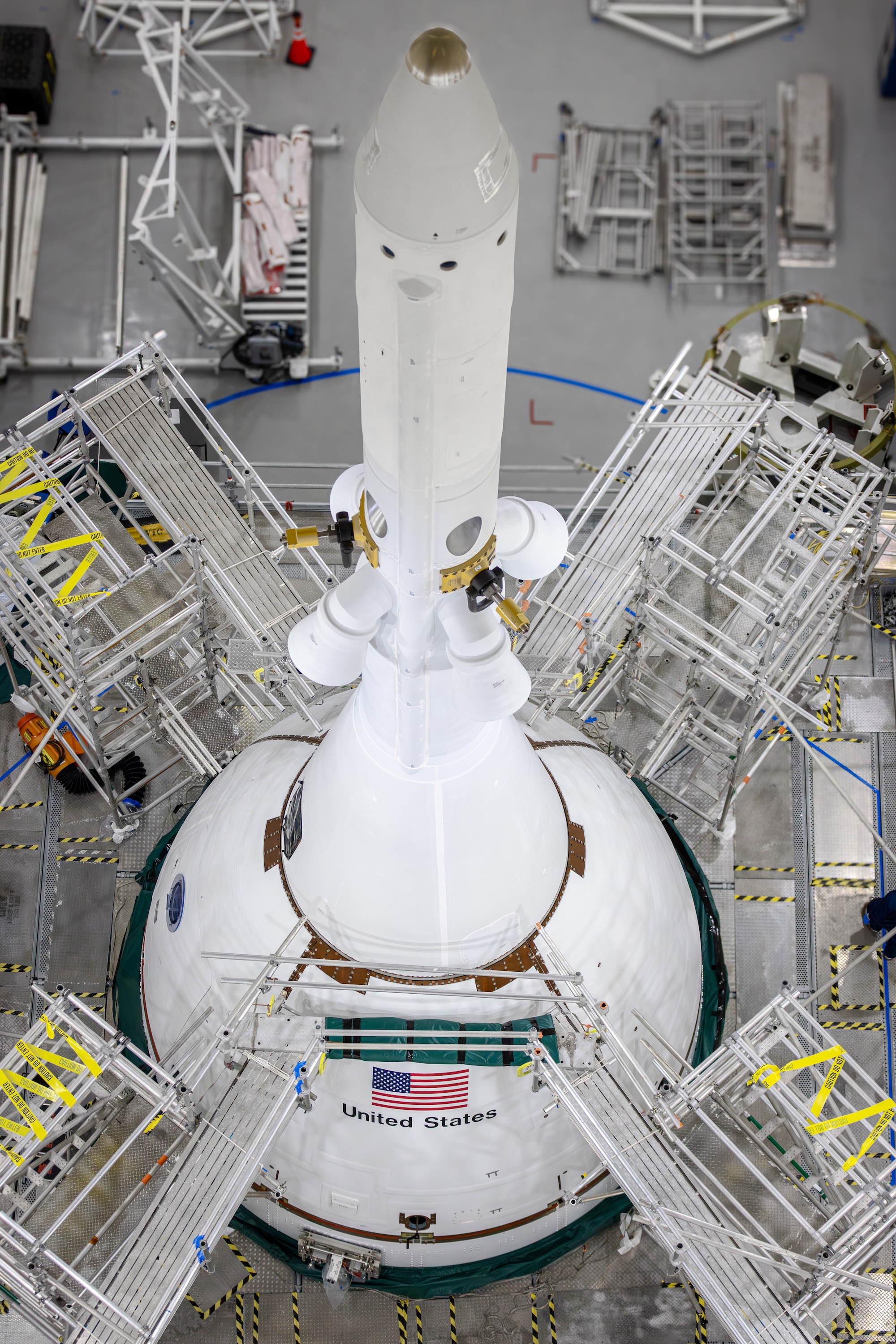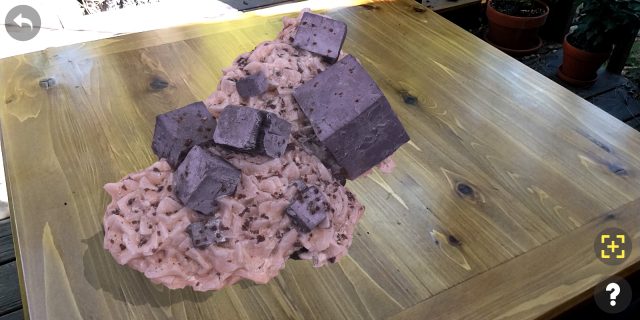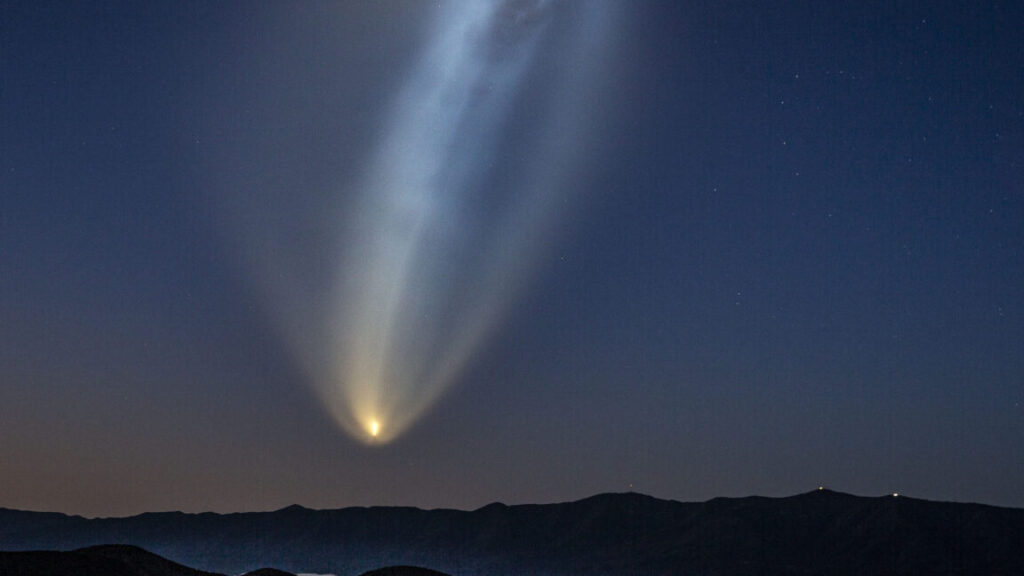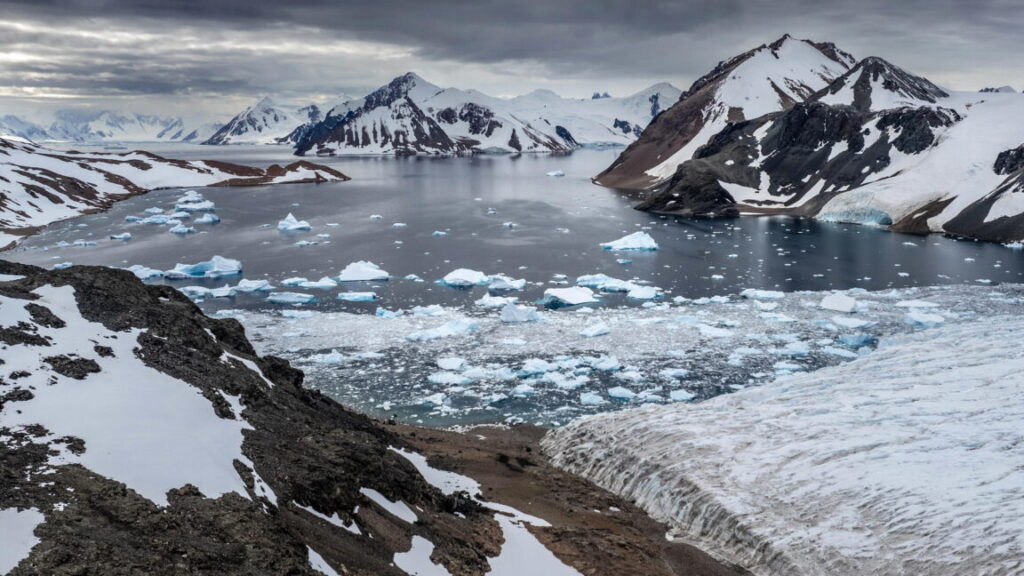The first people to set foot in Australia were fossil hunters
I just think they’re neat
Europeans weren’t the first people to collect fossils in Australia.
Several species of short-faced kangaroos, like this one, once lived in Australia. Some stood two meters tall, while others were less than half a meter tall. Credit: By Ghedoghedo – Own work, CC BY-SA 3.0, https://commons.wikimedia.org/w/index.php?curid=8398432
Australia’s First Peoples may or may not have hunted the continent’s megafauna to extinction, but they definitely collected fossils.
A team of archaeologists examined the fossilized leg bone of an extinct kangaroo and realized that instead of evidence of butchery, cut marks on the bone reveal an ancient attempt at fossil collecting. That leaves Australia with little evidence of First Peoples hunting or butchering the continent’s extinct megafauna—and reopens the question of whether humans were responsible for the die-off of that continent’s giant Ice Age marsupials.
Fossil hunting in the Ice Age
In the unsolved case of whether humans hunted Australia’s Ice Age megafauna to extinction, the key piece of evidence so far is a tibia (one of the bones of the lower leg) from an extinct short-faced kangaroo. Instead of hopping like their modern relatives, these extinct kangaroos walked on their hind legs, probably placing all their weight on the tips of single hoofed toes. This particular kangaroo wasn’t quite fully grown when it died, which happened sometime between 44,500 and 55,200 years ago, based on uranium-series dating of the thin layer of rock covering most of the fossils in Mammoth Cave (in what’s now Western Australia).
There’s a shallow, angled chunk cut out of the bone near one end. When archaeologists first noticed the cut in 1970 after carefully chipping away the crust of calcium carbonate that had formed over the bone, it looked like evidence that Pleistocene hunters had carved up the kangaroo to eat it. But in their recent paper, University of New South Wales archaeologist Michael Archer and his colleagues say that’s probably not what happened. Instead, they have a stranger idea: “We suggest here that the purpose of this effort may have been the retrieval of the fossils from the bone-rich late-Pleistocene deposit in Mammoth Cave after its discovery by First Peoples,” they wrote in their recent paper.
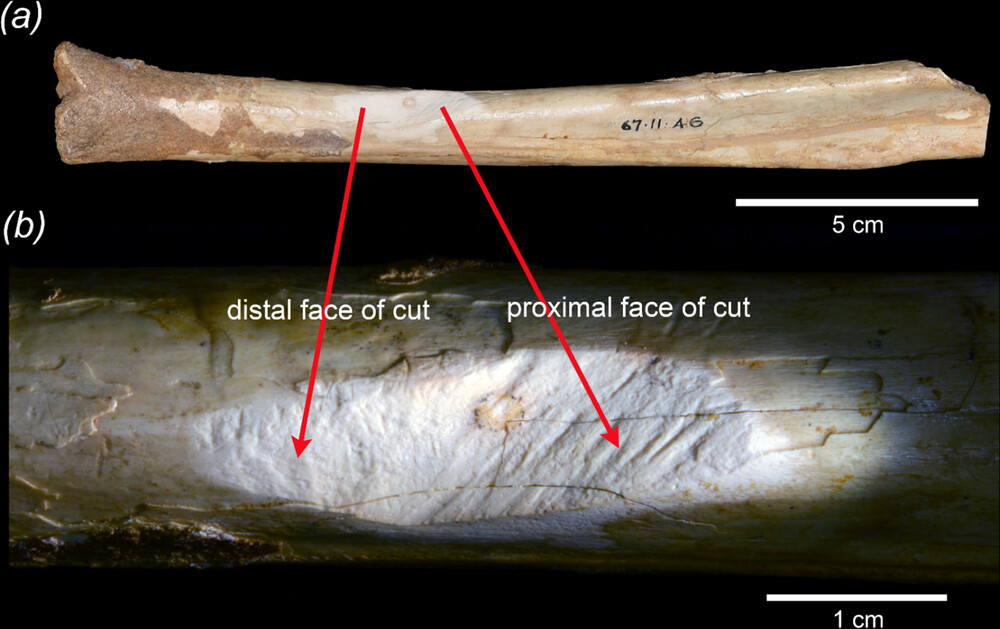
This close-up image shows the cut kangaroo bone and a micro-CT image of the surfaces of the cut. Credit: Archer et al. 2025
The world used to be so much weirder
Based on the available archaeological evidence, it looks like people first set foot on Australia sometime around 65,000 years ago. At the time, the continent was home to a bizarre array of giant marsupials, as well as flightless birds even bigger and scarier than today’s emus and cassowaries. For the next 20,000 years, Australia’s First Peoples shared the landscape with short-faced kangaroos; Zygomaturus trilobus, a hulking 500-kilogram marsupial that looked a little like a rhinoceros; and Diprotodon optatum, the largest marsupial that ever lived: a 3,000-kilogram behemoth that roamed in huge herds (picture a bear about the size of a bison with a woodchuck’s face).
These species died out sometime around 45,000 or 40,000 years ago; today, they live on in ancient rock art and stories, some of which seem to describe people interacting with now-extinct species.
Since they had shared the continent with humans for at least 20,000 years at that point, it doesn’t seem that the sudden arrival of humans caused an immediate mass extinction. But it’s possible that by hunting or even setting controlled fires, people may have put just enough strain on these megafauna species to make them vulnerable enough for the next climate upheaval to finish them off.
In some parts of the world, there’s direct evidence that Pleistocene people hunted or scavenged meat from the remains of now-extinct megafauna. Elsewhere, archaeologists are still debating whether humans, the inexorable end of the last Ice Age, or some combination of the two killed off the world’s great Ice Age giants. The interaction between people and their local ecosystems looked (and still looks) different everywhere, depending on culture, environment, and a host of other factors.
The jury is still out on what killed the megafauna in Australia because the evidence we need either hasn’t survived the intervening millennia or still lies buried somewhere, waiting to be found and studied. For decades, the one clear bit of evidence has seemed to be the Mammoth Cave short-faced kangaroo tibia. But Archer and his colleagues argue that even that isn’t a smoking gun.
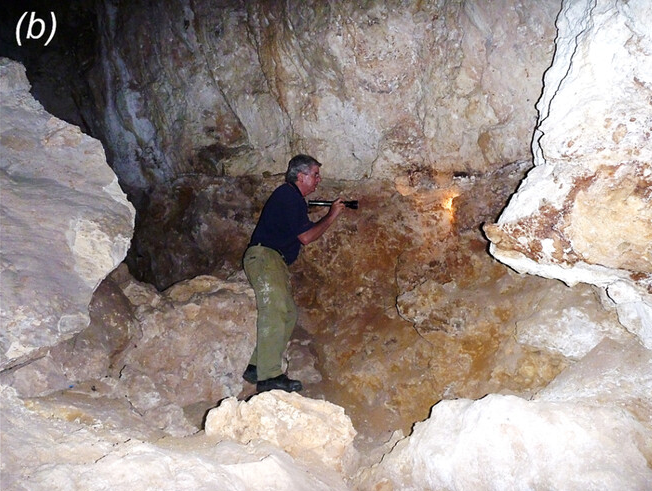
An archaeologist examines a fossil deposit in the wall of Mammoth Cave, in Western Australia. 50,000 years ago, one of the earliest people on the continent may also have stood here contemplating the fossils. Credit: Archer et al. 2025
Evidence of rock collecting, not butchery
For one thing, the researchers argue that the kangaroo had been dead for a very long time when the cut was made. Nine long, thin cracks run along the length of the tibia, formed when the bone dried and shrank. And in the cut section, there’s a short crack running across the width of the bone—but it stops at either end when it meets the long cracks from the bone’s drying. That suggests the bone had already dried and shrunk, leaving those long cracks before the cut was made. It may have just been a very old bone, or it may have already begun to fossilize, but the meat would have been long gone, leaving behind a bone sticking out of the cave wall.
Since there’s no mark or dent on the opposite side of the bone from the cut (which would have happened if it were lying on the ground being butchered), it was probably sticking out of the fossil bed in the cave wall when someone came along and tried to cut it free. And since a crust of calcium carbonate had time to form over the cut (it covers most of the fossils in Mammoth Cave like a rocky burial shroud), that must have happened at least 44,000 years ago.
That leaves us with an interesting mental image: a member of one of Australia’s First Peoples, 45,000 years ago, exploring a cave filled with the bones of fantastical, long-dead animals. This ancient caver finds a bone sticking out from the cave wall and tries to hack the protruding end free—twice, from different angles—before giving up and leaving it in place.
People have always collected cool rocks
We can’t know for sure why this long-ago person wanted the bone in the first place. (Did it have a religious purpose? Might it have made a good tool? Was it just a cool souvenir?) We also don’t know why they gave up their attempt. But if Archer and his colleagues are right, the bone leaves Australia without any clear evidence that ancient people hunted—or even scavenged food from the remains of—extinct Pleistocene megafauna like short-faced kangaroos.
“This is not to say that it did not happen, just that there is now no hard evidence to support that it did,” Archer and his colleagues wrote in their recent paper. We don’t yet know exactly how Australia’s First Peoples interacted with these species.
But whether Archer and his colleagues are correct in their analysis of this particular kangaroo bone or not, humans around the world have been picking up fossils for at least tens of thousands of years. There’s evidence that people in Australia have collected and traded the fossils of extinct animals for pretty much as long as people have been in Australia, including everything from trilobites to Zygomaturus teeth and the jawbones of other extinct marsupials.
“What we can conclude,” Archer and his colleagues wrote, “is that the first people in Australia who demonstrated a keen interest in and collected fossils were First Peoples, probably thousands of years before Europeans set foot on that continent.”
Royal Society Open Science, 2025. DOI: 10.1098/rsos.250078 (About DOIs).
The first people to set foot in Australia were fossil hunters Read More »
